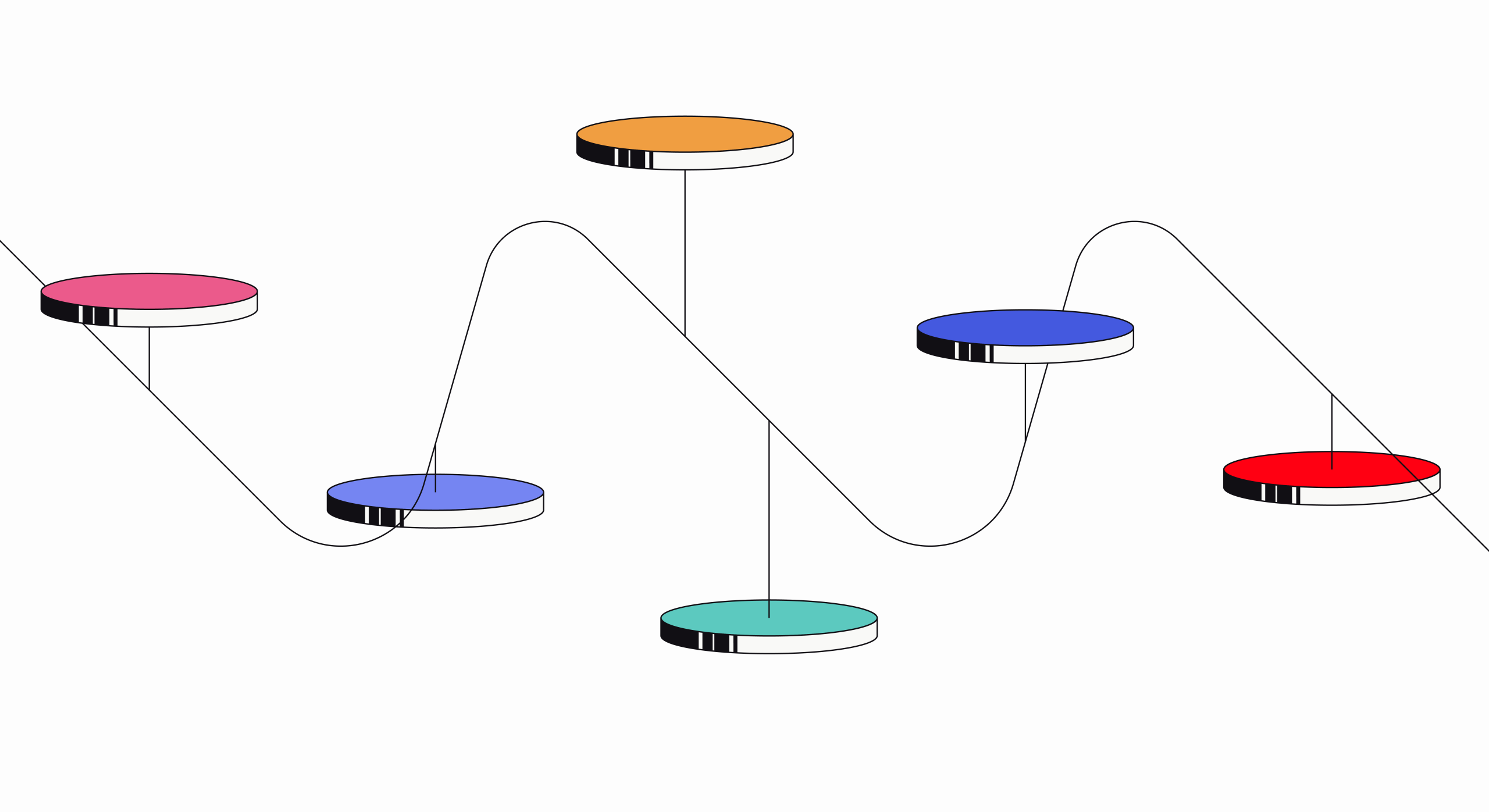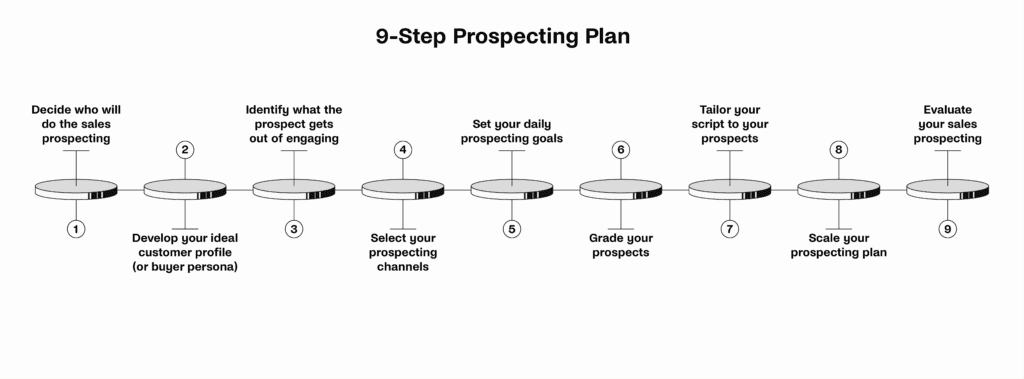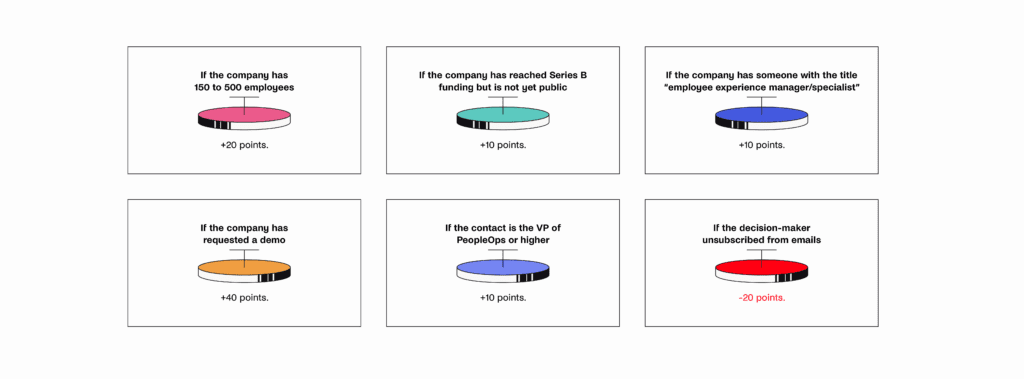
How to Build an Effective Prospecting Plan
Lead generation is one of the hardest parts of the sales cycle. It requires deeply understanding the value you bring to prospective companies (and their people), connecting with them, and conveying that value in a way that warms them up for later sales activities. The most effective prospecting plans are truly personalized to the prospect, yet companies need those tactics to scale over time.
Sales prospecting is the part of the sales cycle concerned with identifying and connecting with prospective customers with the aim of generating new leads, pipeline, and eventually revenue. Here’s everything you need to know to build an effective sales prospecting plan for your business or your territory.
Key takeaways:
- Sales prospecting is the act of identifying and reaching out to prospective customers with the goal of generating new qualified leads and eventually more revenue.Prospecting is most often selected as the hardest part of a salesperson’s job.
- Even when marketing reaches the benchmark of providing 30% of leads and sales pipeline, sales development reps (SDRs), business development reps (BDRs), accounts executives (AEs), and sales managers (SMs) need to spend a high portion of their day prospecting.
- Many companies monitor the success of prospecting and sales by activity metrics (like number of phone calls made) or outcomes metrics (like sales pipeline created), but they should be used together to get a better idea of how your sales team is performing.
- Ideal customer profile (ICP) is used to define your perfect customer organization, while buyer persona (BP) gives a personality, demographics, and pain points to the person within the customer organization who will sign off on the purchase of your product and/or be the one to use it. ICP and BP can be used together to help narrow down the search for new prospects and customize the messaging to fit their needs.
- The right software can help with every step of your sales prospecting plan, from finding new companies to target, to getting the contact information of employees, learning about their business, automating nurture campaigns, tracking their interaction with your emails and website, and following the lead through the sales funnel and beyond.
Looking for peers in the sales industry to bounce ideas off of? Join the Strategic Sales Network.
Sales prospecting statistics
For many people, the sales prospecting process is not easy. In fact, 40% of salespeople say it is the hardest part of their job. That’s because finding prospects isn’t easy. Then, reaching out to them is often a thankless task.
However, prospecting is possibly the most important part of the job. The fact is that most marketing departments struggle to reach the benchmark of providing 25% to 30% of leads to the sales team. Even when they do, that leaves 70% to 75% of lead generation to sales staff.
Thankfully, the right prospecting plan can make the job a little less draining.
How does prospecting fit into the sales process?
So, where does prospecting fit into the typical steps of the sales process? Building strategic relationships is critical, but sales motions typically include these steps:
- Prospect: Source new contacts who could become leads. There are many tools that make this easier, for example Databook, LinkedIn Sales Navigator, and Apollo.
- Connect with and qualify leads: Reach out to the companies and convert prospects into leads. Use a CRM like HubSpot or Salesforce to make this easier and track your touchpoints.
- Research the company: Research the company to better personalize your sales approach. This is where Databooks is really beneficial.
- Give an effective pitch: Once you have the information on the business and individuals, pitch your product.
- Objection handling: Once you’ve given the pitch, you’ll need to handle any concerns they have. This is actually a good thing, as people uninterested in your product or service are unlikely to spend the time conveying their objections.
- Close the deal: This is where the new client signs a contract and sales engineers, product managers, and the rest of the team do everything necessary to get the new customer onboarded.
- Nurture and continue to sell: Contrary to the sales funnel of the past, the closed-won is no longer the end of the sales process. There are always upsells, expansions, and other reasons to continue to nurture the relationship with your customers.
While this division is comprehensive, an effective prospecting plan really encompasses the first two stages of the sales process.
9 steps to building a prospecting plan
The first step in taking the frustration out of sales prospecting is to formalize your strategy. By deciding who will prospect, how much, and which metrics will be used to evaluate success, you won’t be left wondering whether you are doing too much to achieve too little.
Here are nine steps to developing a sales prospecting plan:
- Decide who will do the sales prospecting
- Develop your ideal customer profile (or buyer persona)
- Identify what the prospect gets out of engaging with you
- Select your prospecting channels
- Set your daily prospecting goals
- Grade your prospects
- Tailor your script to your prospects
- Scale your prospecting plan
- Evaluate your sales prospecting

- Decide who will do the sales prospecting
There’s no question that someone on your sales team should be looking for prospective customers, but who that is changes from organization to organization. Sales reps, account executives (AEs), and sales managers (SMs) all traditionally spend time prospecting for new leads.
However, more recently, dedicated prospecting roles have been created. Sales development reps (SDRs) and business development reps (BDRs) have been established as more junior roles on the sales team with a sole focus on prospecting. SDRs and BDRs spend their time cold calling prospects, sending follow-up emails, and getting people inside targeted enterprises on the phone for salespeople.
Note that, even in organizations with BDRs or SDRs who are solely focused on prospecting, most sales reps and AEs are responsible for lead generation as well.
- Develop your ideal customer profile (or buyer persona)
Before jumping on the phone to make cold calls, you need to know what kind of businesses you are targeting and who in the enterprise is in charge of buying decisions related to your product. There are two main tools used for this: ideal customer profile (ICP) and buyer persona (BP).
Ideal customer profile (ICP)
The ideal customer profile represents the perfect business for you to sell to. These are companies in the right industry, at the right size, and with the right pain points to get the maximum ROI out of your offering. As such, these are leads that should be easy to close if you can get them into a sales demo.
Buyer persona (BP)
Buyer persona is a different way to define the perfect prospect. In this case, instead of thinking about the company and the ROI you provide them, you narrow down on the person who will make the buying decision.
Ultimately, big organizations are made up of people, and it’s these individuals who will evaluate the value you bring to them. If your product saves the decision-maker five hours/week, is it the company saving hundreds of dollars per employee or Brian in accounting being able to leave work at 5:00 on Fridays who is going to have a stronger emotional reaction to that value?
Buyer personas consider demographics, budgets, personalities, departments, level of seniority, etc. of future users to decide who in an organization should be targeted. If you are familiar with the MEDDIC sales framework, these buyer personas have the potential to become your champions.
ICP vs BP
The fact is that you should be using ICP and BP together. Your ICP gives you enterprises to target in tools like Apollo or Linkedin Sales Navigator, while your BP tells you who in the organization to reach out to, as well as how to tailor your message to them.
- Identify what the prospect gets out of engaging with you
To understand this step, we need to link three terms: features, benefits, and pain points.
- Feature: A feature is a functional unit of a product or service.
- Benefits: A benefit is an explanation of how the feature helps the customer.
- Pain point: A pain point is a recurring problem that your buyer persona and/or ideal customer profile experiences and is a big enough issue that they are willing to invest in a new product or service to solve it.
When running through this step, it is often helpful to create a table with each of these headers. Then, list every pain point your prospect has, match it to a feature, and then describe the benefit of using the feature.
Here’s an example for wireless earphones:
| Pain point | Feature | Benefit |
| Need to pause Zoom meetings whenever life causes a distraction | Wireless Bluetooth earphones with a 50’ range. | Can easily run to get a drink, answer the door, help a distracting child or pet, while still listening to colleagues. |
To accomplish this step, start with asking a series of questions:
- What is the prospect’s greatest pain?
- Why are they miserable without your solution?
- What’s the measurable end benefit to the prospect?
Join the Strategic Sales Network today to learn from peers in sales about how they research potential customers.
- Select your prospecting channels
There are several ways you can break down the different prospecting channels to decide which will work for your business. Here are three ways businesses differentiate among lead-gen channels:
- Inbound vs outbound
- Marketing vs sales
- Accounts based vs wide net
Whichever channels you focus on, don’t forget about referrals. These are often your ideal prospects because a current customer has already done most of the hard work convincing the referral that your business brings them value.
Inbound vs outbound
Inbound encompasses all the channels where you wait for leads to come to you. Two of the most common are digital marketing strategies: search engine optimization (SEO) and search engine monetization (SEM). Whether they are clicking on your free content or a paid ad, this is an inbound lead-generation methodology.
Despite the impressions of many in the industry, salespeople have a role to play in SEO! Webinars, for example, can draw a great number of people to your website and garner many demo requests. The best host for a webinar is often a sales leader as opposed to someone in the marketing department.
Outbound is going out and finding prospects. Marketing is keen to use emails and newsletters, sales tends to pick up the phone and make cold calls, while sales and marketing work together when heading to (or hosting) events.
Marketing vs sales
Marketing is usually given the goal of generating 30% of all leads, while the rest comes from sales “hunting.” Hunting refers to aggressively working through lists of qualified contacts with phone calls and personalized emails.
One place where marketing and sales can complement each other is social media. Social media is a great way for official company profiles to connect with many people at once. However, individual account executives can track the likes and comments from prospects on their company’s post and then follow-up with private direct messages.
Remember, though, social media is a place for casual, short messages. A long, formal sales pitch in a Linkedin DM is likely to get you disconnected, blocked, or muted. When social selling, consider which network you are using and be sure to follow the etiquette of that social network.
Accounts based vs wide net
Some businesses can earn seven or even eight figures annually from one large enterprise customer. In these cases, accounts-based sales, where you spend a great deal of effort building an entire sales and marketing campaign targeted at a single company, can be highly profitable.
For other businesses, they need to draw a wide net and target entire industry prospect lists to be profitable. In these cases, a hands-off sales process can be preferred, for example a freemium model or limited free trial where the sales professionals are focused on converting users who show some indication of engagement into paid customers.
- Set your daily prospecting goals
The right prospecting goals will create a balance between an effective amount of sales outreach and becoming burned out. Have you heard of “SMART” goals? SMART stands for specific, measurable, achievable, relevant, and time-bound. It is a way of creating the right goals.
Here are some SMART goals for sales prospecting:
- Make five phone calls per day.
- Send five personalized emails per day.
- Send a bulk email to one large prospecting list per week.
- Post one piece of content that will resonate with your buyer personas on Linkedin.
- Send one follow-up direct message to someone who interacted with your content.
Once you’ve established baseline SMART goals, track how often you reach your prospecting activity KPIs and then adjust them if needed.
- Grade your prospects
It’s important to grade your prospects so you focus the most time on the prospects that are most likely to become qualified leads, opportunities, and closed-won deals. The best qualifying rubrics use a combination of base attributes and prospect activities.
Here’s an example.
You provide HR software that makes it easier to provide gifts to employees to show appreciation.
- If the company has 150 to 500 employees, +20 points.
- If the company has reached Series B funding but is not yet public, +10 points.
- If the company has someone with the title “employee experience manager/specialist”, +10 points.
- If the company has requested a demo, +40 points.
- If the contact is the VP of PeopleOps or higher, + 10 points.
- If the decision-maker unsubscribed from emails, -20 points.
In this case, you could define a score of 40+ as a good prospect, while one with 70+ points as a great lead.

- Tailor your script to your prospects
If your company targets multiple industries, business sizes, geographical regions, and positions within the company, then you’ll need to use different scripts for each subset. Furthermore, the best scripts are very loosely followed.
All potential buyers are different, so you need to listen to them and change the conversation on the fly. Decision-making is also difficult, and tailoring your sales pitch gives the person the information they need to say yes.
- Scale your prospecting plan
There are a lot of sales prospecting tools out there, which can help you scale your business. Beyond new sales software to help find new business, there are a few other things that can make each part of prospecting a little faster and more scalable.
First, consider checklists. A prospect checklist can help you both grade potential customers (see Step 6) and keep track of all your touchpoints. Second, get comfortable with templates. From a prospecting template to email templates, these make it possible to scale efforts while being free enough to personalize to each individual potential client.
- Evaluate your sales prospecting
Most businesses evaluate sales prospecting in one of two ways. They look at sales activities metrics or they look at sales outcome metrics. However, ideally, you should use both sets of metrics because they are tracking different things.
Activity-based metrics evaluate the effort of your SDRs and BDRs, while outcome-based metrics evaluate their impact on the business.
Activity based
Activity-based metrics include the number of touches an individual lead has received, the number of sales activities (phone calls, emails, demos, etc.) an individual account executive has performed, while time since last touch indicates how long it has been since a prospect has received any communication.
At the daily level, sales activities are often broken down into individual components. For example, the VP of sales may want to monitor the number of phone calls, emails, and demos conducted, since they have different expected impacts on the business and don’t all take the same amount of time.
Outcome based
Outcome-based metrics focus on conversion rates as well sales pipeline and revenue generated. Counting the number of prospects that become leads, leads that are qualified, sales-qualified leads (SQLs) and marketing-qualified leads (MQLs) that become opportunities, and opportunities that become closed-won deals is important because it tracks efficiency of the sales funnel.
While it might seem like overkill tracking each sub-conversion rate, knowing how well each part of the funnel is converting can help you pinpoint where something is going wrong.
Another important outcome metric is the number of demo requests that actually attend a demo because these are likely high-quality prospects, and if you are losing too many there could be something wrong with your funnel. For example, your SDRs might not be calling the leads to confirm their appointment.
Finally, sales pipeline and revenue generated are by far the most important factors in the success of the business. These are the ultimate goals of prospecting, so the entire organization should be paying attention to these numbers.
Hone your sales prospecting techniques in the Strategic Sales Network
Every sales prospecting strategy can get better, and there’s no reason to do it alone. In fact, it might be something that can only be done with the help of others, including those outside your business.
Sometimes only the perspective of a third-party sales leader can provide the clarity you need to fix the issues in your sales prospecting process. Having access to peers and mentors in the sales community can help you help your company.
Learn from the brightest B2B sales minds in the game to elevate your sales career. Join the Strategic Sales Network today.
You might also like...
Navigating the CFO’s Mindset: What Every Seller Should Know
Here are some of the key principles sellers should note when engaging financial decision-makers in large enterprises.
Read more: Navigating the CFO’s Mindset: What Every Seller Should KnowRenewals at Risk? Time to Be Proactive
Need help getting proactive to protect your critical accounts? Here's some insight to help you stay ahead of the game.
Read more: Renewals at Risk? Time to Be ProactiveThe Real Deal with Dave Graswick: It's Getting Hot in Here
Time for another edition of The Real Deal, where our sales expert David Graswick answers burning questions from Strategic Sales Network members. This time, he tackles everything from setting couches on fire (you read that right) to re-igniting your skillset in a tough economy.
Read more: The Real Deal with Dave Graswick: It’s Getting Hot in Here